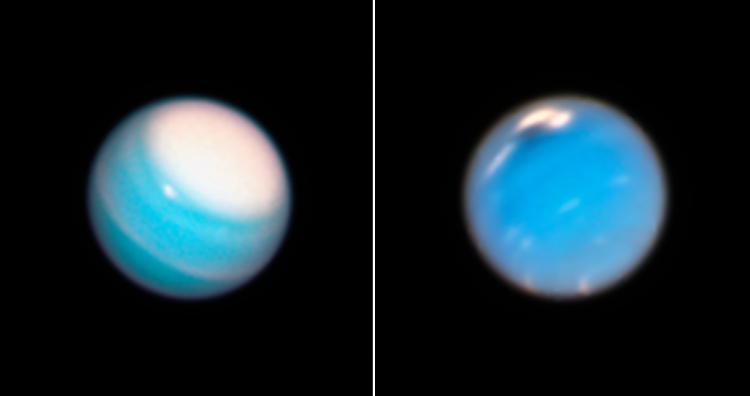Our solar system's most distant planet has revealed a new mystery.
An unparalleled investigation of fluctuations in Neptune's temperature has discovered something weird happening on our Solar System's furthest planet.
Seasons occur on Neptune, which orbits the sun at a distance of 2.8 billion miles (4.5 billion km), but they last much longer. A year on Neptune lasts approximately 165 Earth years, so a single season can last approximately 40 years.
Right now, Neptune's southern hemisphere is in the midst of a four-decade-long summer, but the temperature hasn't exactly been rising - at least not in the way we might expect - for reasons scientists don't entirely understand.
Nearly 100 thermal images of Neptune taken since then showed that much of Neptune gradually cooled, dropping by 14 ℉ (8 °C) between 2003 and 2018.
A recent study based on 17 years of Neptune temperature monitoring finds the reverse to be true, with readings revealing a mystery worldwide averaged reduction of around 8 degrees Celsius between 2003 and 2018, as demonstrated by a large drop in atmospheric radiation from 2003 onwards.
"Since we've been studying Neptune throughout its early southern summer, we expected temperatures to gently grow warmer, not cooler," said planetary scientist Michael Roman of the University of Leicester in the U.K..
Such observations have only been achievable since the turn of the century, thanks to the introduction of sensitive infrared measurements on newer space observatories. One of these is VISIR (VLT Imager and Spectrometer for Mid-Infrared) on the Very Large Telescope (VLT) of the European Southern Observatory, which can infer temperature based on the degree of infrared light emission.
Images were captured using the European Southern Observatory's Very Large Telescope and Gemini South telescope in Chile, as well as Hawaii's Subaru Telescope, Keck Telescope, and Gemini North telescope, and data from NASA's now-retired Spitzer Space Telescope. The infrared light emitted by Neptune's stratosphere, or the atmospheric band above the active weather layer assisted astronomers in detecting temperature fluctuations.
We don't know why Neptune's atmospheric temperature seems to fluctuate so unexpectedly in the middle of the season, but the researchers believe changes in atmospheric chemistry may be to blame.
"Photochemically produced hydrocarbons - notably ethane and acetylene - are highly powerful infrared emitters that serve to freeze the stratosphere," the researchers stated in their report. "As the number of photochemical hydrocarbons changes, the stability between this radiative heating and cooling changes."
More observations will be required to fully investigate these possibilities. Later this year, the James Webb Space Telescope will observe Uranus and Neptune. The mid-infrared instrument on the space observatory can map the chemistry and temperatures in Neptune's atmosphere and may be able to determine what caused the shift.
All we know for certain is that we'll need a lot more investigation to unravel these stunning readings - simply the most recent thriller related to this obscure, faraway world.




